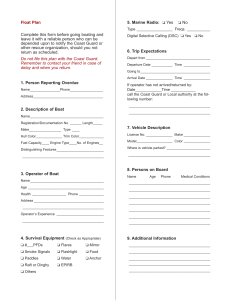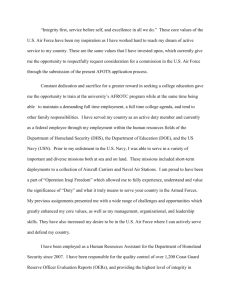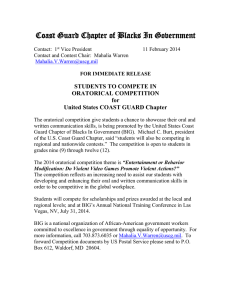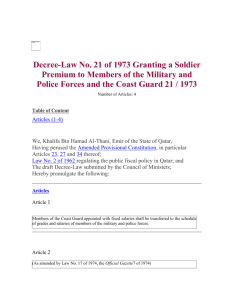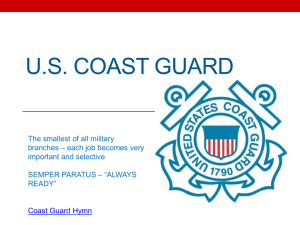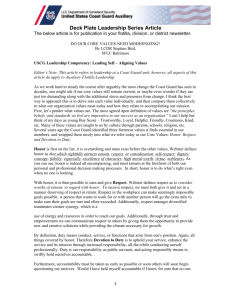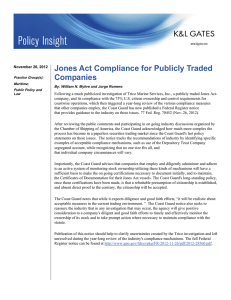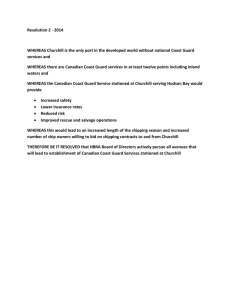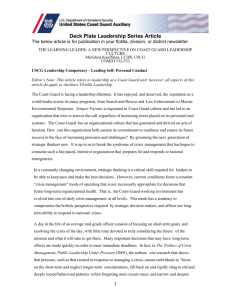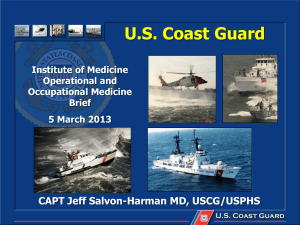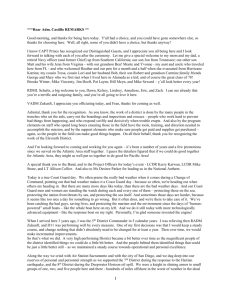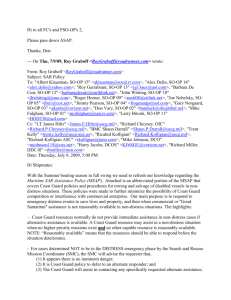The Coast Guard`s Dirty Laundry Should We Air It or Bury It
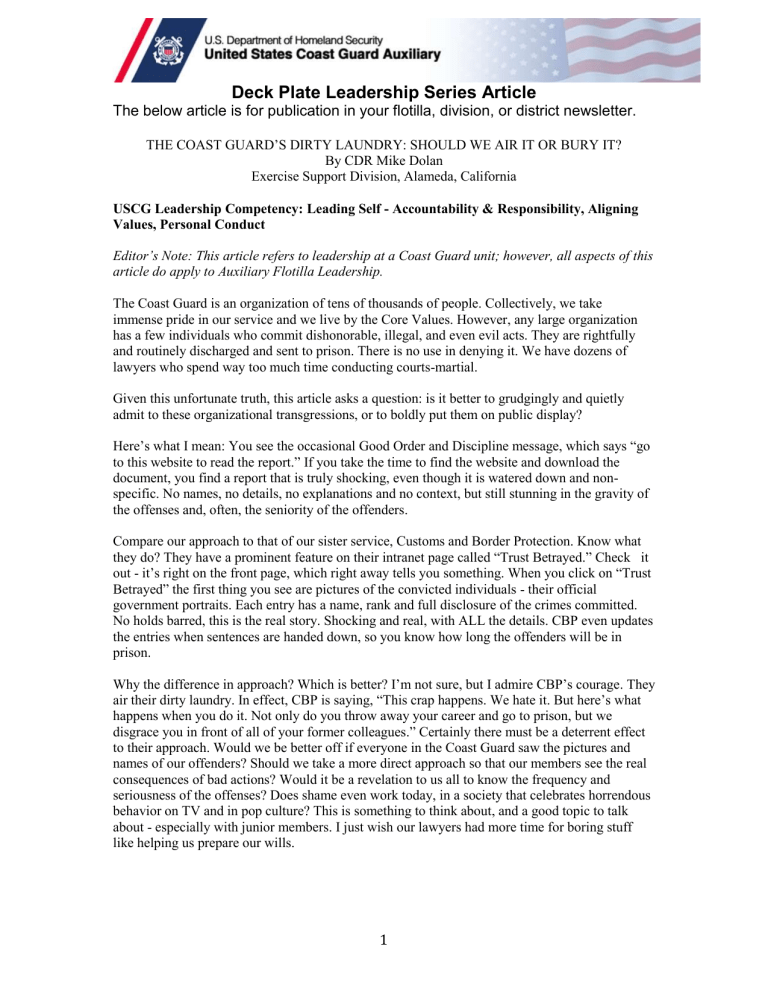
Deck Plate Leadership Series Article
The below article is for publication in your flotilla, division, or district newsletter.
THE COAST GUARD’S DIRTY LAUNDRY: SHOULD WE AIR IT OR BURY IT?
By CDR Mike Dolan
Exercise Support Division, Alameda, California
USCG Leadership Competency: Leading Self - Accountability & Responsibility, Aligning
Values, Personal Conduct
Editor’s Note: This article refers to leadership at a Coast Guard unit; however, all aspects of this article do apply to Auxiliary Flotilla Leadership.
The Coast Guard is an organization of tens of thousands of people. Collectively, we take immense pride in our service and we live by the Core Values. However, any large organization has a few individuals who commit dishonorable, illegal, and even evil acts. They are rightfully and routinely discharged and sent to prison. There is no use in denying it. We have dozens of lawyers who spend way too much time conducting courts-martial.
Given this unfortunate truth, this article asks a question: is it better to grudgingly and quietly admit to these organizational transgressions, or to boldly put them on public display?
Here’s what I mean: You see the occasional Good Order and Discipline message, which says “go to this website to read the report.” If you take the time to find the website and download the document, you find a report that is truly shocking, even though it is watered down and non- specific. No names, no details, no explanations and no context, but still stunning in the gravity of the offenses and, often, the seniority of the offenders.
Compare our approach to that of our sister service, Customs and Border Protection. Know what they do? They have a prominent feature on their intranet page called “Trust Betrayed.” Check it out - it’s right on the front page, which right away tells you something. When you click on “Trust
Betrayed” the first thing you see are pictures of the convicted individuals - their official government portraits. Each entry has a name, rank and full disclosure of the crimes committed.
No holds barred, this is the real story. Shocking and real, with ALL the details. CBP even updates the entries when sentences are handed down, so you know how long the offenders will be in prison.
Why the difference in approach? Which is better? I’m not sure, but I admire CBP’s courage. They air their dirty laundry. In effect, CBP is saying, “This crap happens. We hate it. But here’s what happens when you do it. Not only do you throw away your career and go to prison, but we disgrace you in front of all of your former colleagues.” Certainly there must be a deterrent effect to their approach. Would we be better off if everyone in the Coast Guard saw the pictures and names of our offenders? Should we take a more direct approach so that our members see the real consequences of bad actions? Would it be a revelation to us all to know the frequency and seriousness of the offenses? Does shame even work today, in a society that celebrates horrendous behavior on TV and in pop culture? This is something to think about, and a good topic to talk about - especially with junior members. I just wish our lawyers had more time for boring stuff like helping us prepare our wills.
1
Deck Plate Leadership Series Article
The below article is for publication in your flotilla, division, or district newsletter.
CDR Mike Dolan was at the time this articles was written the Alameda Branch Chief of the
Exercise Support Division. He enlisted in 1991 and received a Direct Commission in 1996. This is his third article in the Leadership News.
Reprinted with permission of the Coast Guard e-Leadership News Magazine at http://www.uscg.mil/leadership/resources/leadershipnews.asp
2
